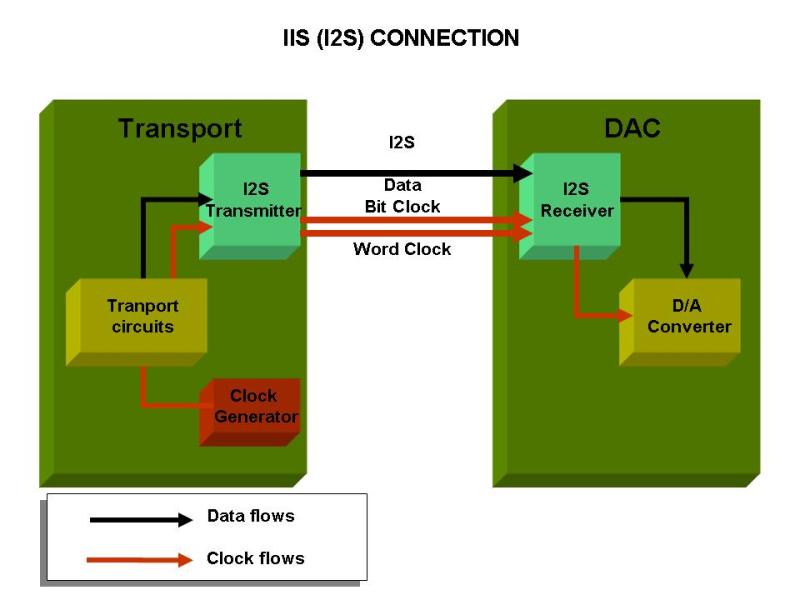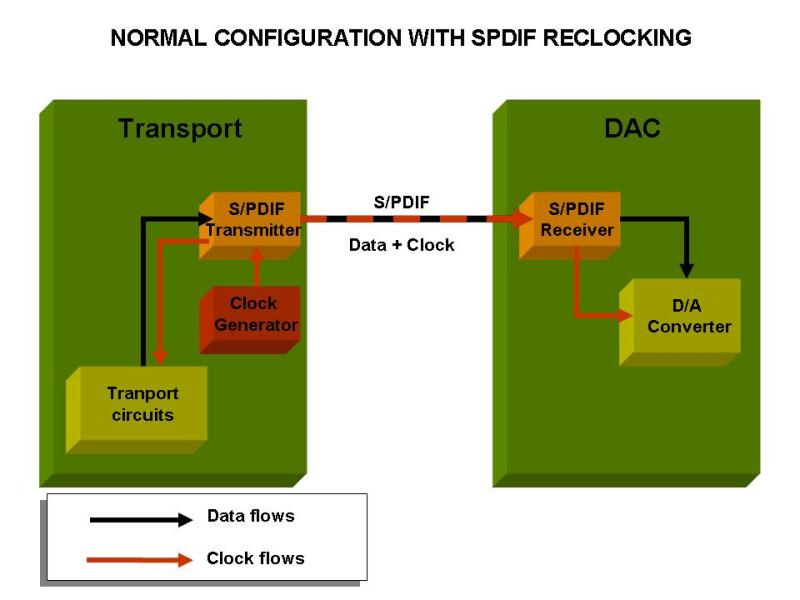Deleted
Deleted Member
Posts: 0
|
Post by Deleted on May 27, 2009 22:32:59 GMT
The attached quote is from Russ White, the designer of the Buffalo DAC etc.
Are there REALLY any advantages in going the I2S route over a properly implemented SPDIF ? Is it just technical one upmanship ?
Alex
quote:
Originally posted by Russ White
Hi Roland.
I am not sure which is "better". I have very good SPDIF sources and I hear no difference between them and an I2S source.
The ES9018 can decode both AES and SPDIF formats. No worries there. But you will want to level shift the signal to either consumer level (say with a 4:1 trafo or similar cct) or to true TTL level.
If you have it as consumer level then use it as if it were consumer SPDIF.
If you have it as TTL then use D1 and GND.
Cheers!
Russ
|
|
rickcr42
Fully Modded
Rest in peace my good friend.
Posts: 4,514
|
Post by rickcr42 on May 28, 2009 17:08:15 GMT
I would say absolutely YES.......but only if it is done right and you realize the limitations of the formats. For one,I2S is a "pure" state data transmission method and by that I mean the Data and clock lines are separate wires while SPDIF takes the former separate signals and combines them into a single wire transmission stream:   So what SPDIF does is it takes the multiple lines of the original I2S connection inside of a CD player (CDPs have no need to TRANSMIT data and clock signal they being directly connected to the next stage internall and referenced to a single clock) and combines them via the Digital Transmitter Chip so they can be sent outside the "box" so the data stream can be accessed externally.Originally this was so one could TEST the data stream in the lab to make sure everything was working and NOT as a means for quality digital audio transmission but as with most things,once some knucklehead decided an external DAC would be a step up in SQ (I beleive PS Audio had the first external DAC) they used what was available at the time and once you do a thing original you can be damn sure others will follow so once external DACs became commonplace the SPDIF connection became the "standard" for data transmission even though comprimised from the start (much like the RCA connector for analog audio ;D ). Audio alchemy tried to change all that decades ago and even though most said it was BETTER it never quite caught on until now,now that it is the current "fad" we see it touted far and wide as a featured selling point even though most have no fkn clue why they need or want it. Truth is,I2S is usually implemented so badly,has such a limited range of transmission (measured in inches not feet unless you add drivers and they have their own set of problems  ) that in the end the average audiophile is much better off sticking with SPDIF or you end up taking a step back and not a step foward. With I2S you need to think in terms of LOCAL data streaming so if your setup is one where you can keep ALL the lines short it will maybe work (and why you see it mostly INTERNAL to the CDP or DAC because the connection is short) With SPDI you need to think in terms of clock recovery because the truth is it was likely mangled after going through all the steps of conversion and transmission but with the upside of you can now exten the transmission range from mere inches to feet in length,much more user freindly in the average domestic hi fi. Jitter is real and is one of the main culprits in how one dac can sound so different from another even if they use the very same chips but sometimes the cure is worse than the disease so choose your poison  |
|